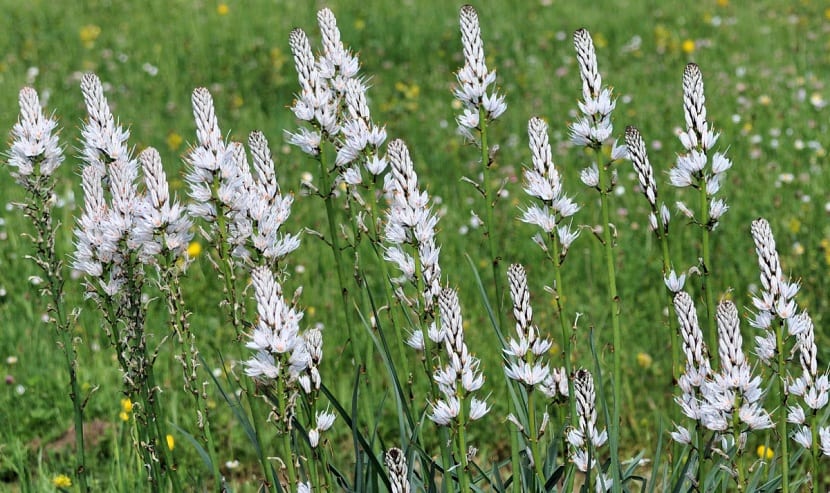
Asphodel It is a herbaceous plant with a tuberous root and native to the Mediterranean basin and Asia. Its scientific name is Asphodelus albus and its name comes from ancient Greece. It was used to honor the dead. Vulgarly it is known by the names of Gamón, rod of San José or Gamoncillo.
If you want to know the characteristics of this plant and the necessary care, keep reading, because in this post we are going to tell you everything 🙂
Key features
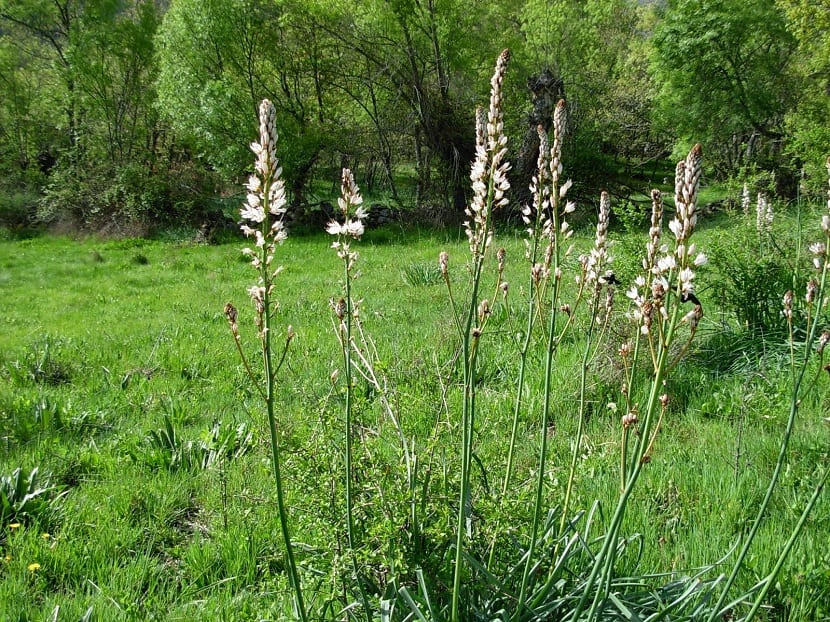
Asphodel belongs to the genus Asphodelus. Other known species of this genus are Asphodelus aestivus, Asphodelus fistulosus, Asphodelus ramosus, Asphodelus albus, Asphodelus acaulis.
Usually your height is between 60 and 70 cm. They have thin and linear leaves that meet in the tufts. The flowers are quite pretty and showy. They are white in color, although sometimes they turn pink, and appear arranged in clusters at the end of the flower stalk. This is characteristic because its midrib is dark in color in each flower. The flowering time is in summer.
They are used primarily to create clumps on grass or curbs. It is also used as a cut flower.
Environmental conditions for its cultivation
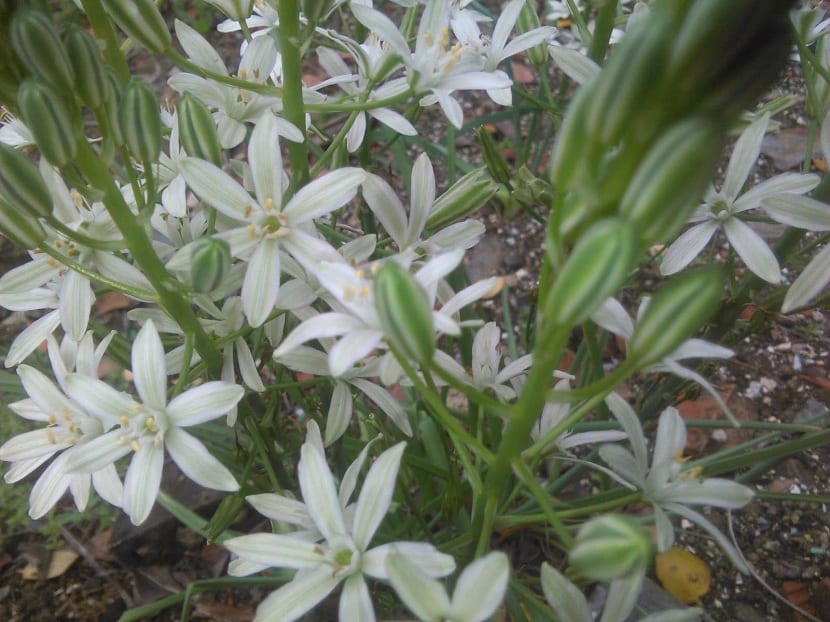
So that this plant can be grown in good conditions the soil prefers to be dry, well drained and deep. It is better if they are somewhat sandy or rocky. It is imperative that it is rich in humus, although it also survives on poorer terrain. The pH is indifferent. It can develop in both acid and base soils.
As its flowering is in the summer time, it needs drier, sunnier and warmer seasons.
If we want to propagate it, it can be done by dividing tuberous roots immediately after the flowering season. It can also be propagated through seeds, although it is a slower procedure. If we do it for seeds, we will need a seedbed to sow it during the months of March or April. In this way, it will be prepared for the summer to grow stronger taking advantage of the warmer season.
In winter, to protect yourself from the cold, it is important to keep the highest temperatures of 15 degrees in a greenhouse. Once cultivated, after two or three months it will begin to germinate. When it has developed enough to handle the seedlings, it will be transplanted to the final place. If the place where we intend to transplant it is not too warm, it will be necessary to put it in a pot to keep it indoors where the temperature is higher. This should be done at least the first year, when the plant is weakest under adverse environmental conditions.
Asphodel is used mainly to decorate rockeries and flower beds.
Asphodel maintenance and care
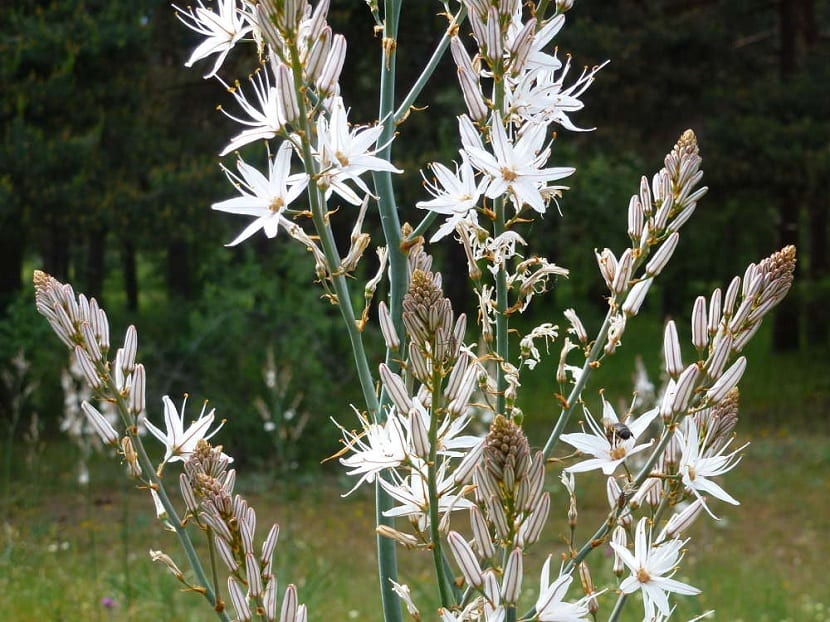
It is a perennial plant that renews its seedlings every year. They usually last from fall or early March to mid-April. It needs plenty of full sun exposure, although it can live in semi-shade.
The most recommended soil for it it is a mixture of peat (1/6) and sand (2/6). To transplant it it is better to wait for the warmer seasons such as spring.
As for watering, you need to water enough so that the soil is moist. However, it does not have to become waterlogged or the roots will rot.
It is advisable to pay it with organic fertilizer once a year. In general, they are plants with an easy cultivation since they are not usually attacked by pests and diseases. Although they are in the garden, their resistance is quite high.
Asphodelus albus as an invasive species
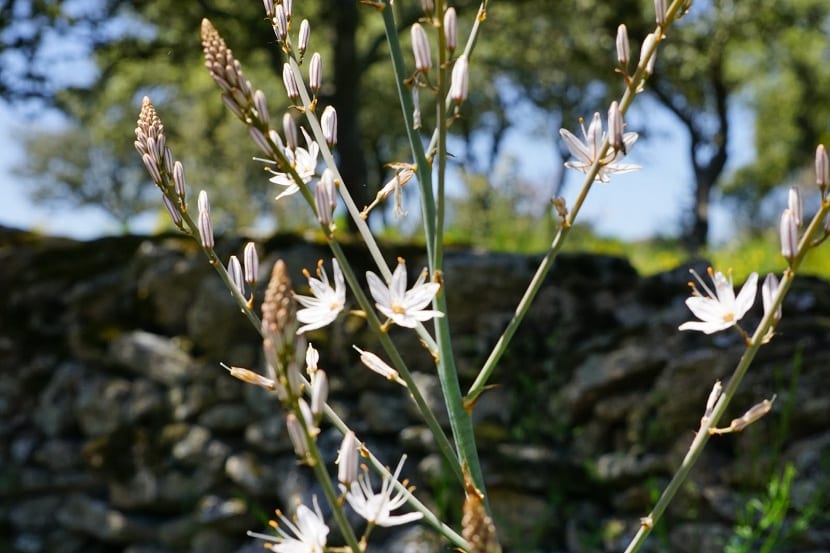
In many parts of the world asphodel is an invasive plant. This is due to its high seed production. Animals hate this plant, so even herbivores don't eat it. The circumstances of transport through sea and air means that this plant establishes itself in other habitats that are not its own.
It has great adaptability. It has reached such a level that have come to find in the Sahara desert where rainfall does not reach 100 liters per year.
On the other hand, in California, New Mexico, Texas and Arizona also consider this herb as invasive exotic.
Medical uses
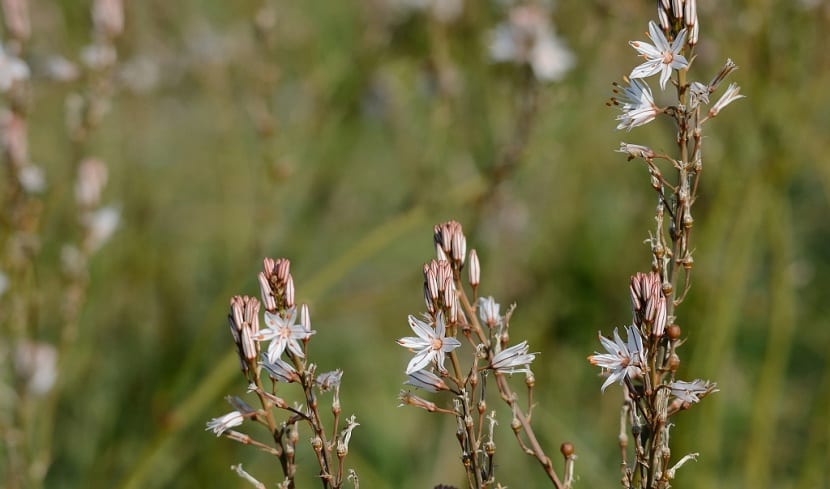
Not everything about this plant is bad since, although invasive, it has good medicinal properties. It has been used throughout history for various purposes. The first dates back to the year 1710, where Dr. William Salmon explained his first properties. It is a mixture of your juice mixed with used white wine to combat any type of obstruction in the intestines and lungs.
The liquid has also been used to heal stomach ulcers. The tincture of the plant was used to eliminate liquids for people with gout. Its main function was to act as a diuretic.
Another different use was to use it as ointments for wounds, tumors, bruises and calluses. In Spain, the largest asphodel is used to treat eczema.
Other uses of asphodel
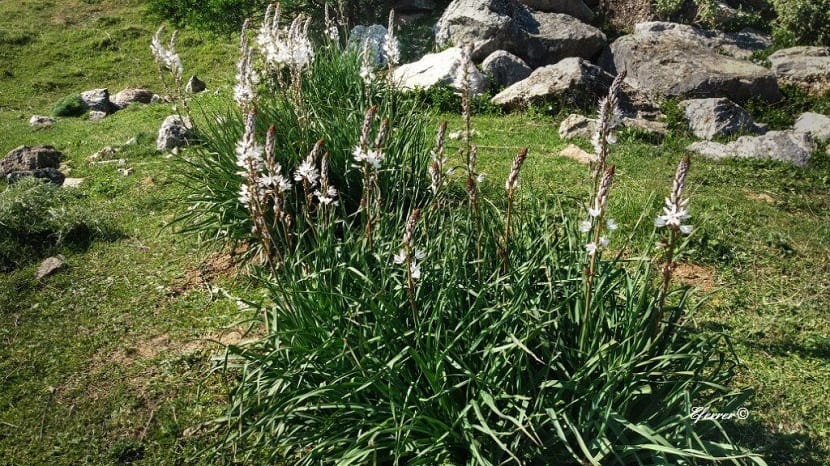
The root of this plant has a large amount of starch. Formerly it was used for the manufacture of bread and the extra contribution of carbohydrates. It was called the potato of the ancients. The stems were used to make baskets that were used for shopping or for harvesting.
It is a plant that animals detest. Therefore, it serves to keep mosquitoes away from houses. Formerly the tubers were consumed. However, recent studies analyzed the presence of asphodelin in the plant. This enzyme is toxic to humans, so it was no longer consumed.
Although it is toxic for humans, it is used as food for livestock and to extract sugar from tubers. It has healing properties and is used for skin conditions.
It was the quintessential funeral plant. In Greece, it was carried to the tombs, as it was believed that the dead fed on it.
As you can see, asphodel is a whole plant with great history and widely used since ancient times. With this information you can have it in your garden without any problem.